Foam-filling skid steer tires is considered a safe option as doing so gives more durability, traction, and strength to the tires. To fill foam in the tires, you can either take the DIY approach or get a mechanic to do it for you.
The better option is to go to a mechanic. But if you want to do it yourself, pay attention to the tire and closely observe till the point foam starts to leak out from the valve stem portion.
What's In This Guide?
What Are Foam Filled Skid-steer Tires?
Foam-filled tires are a type of pneumatic tires that were introduced to replace air-filled tires. Because the air-filled tires run the risk of going flat due to a wide gamut of reasons, the foam-filled tires do not go flat. They also provide the same benefits as air tires in terms of traction, performance, and mileage without the part where the tires can get punctured.
Because the air-filled tires run the risk of going flat due to a wide gamut of reasons, the foam-filled tires do not go flat. They also provide the same benefits as air tires in terms of traction, performance, and mileage without the part where the tires can get punctured.
Plus, the foam fill tires will also not lose air pressure. We use foam filled tires on skid steers due to their ability to perform well even in harsh conditions. Skid steers will majorly run on rough roads filled with pebbles, rocks, dirt, etc.
So, we prevent changing and repairing any damage caused to the tires due to such terrains using foam fill tires. In addition to these benefits, the foam-filled tires are better at maneuvering, and they bring efficiency into the operations, especially in the kind of work done by the skid steers.
Foam-filled tires give more stability to the skid steer, which is good. But some might argue that they also provide the extra weight, which can lead to mileage issues. Additional vehicle stability offers better control in rough terrains, which is difficult to obtain with air-filled tires. Hence foam-filled tires provide better footing to the vehicle.
Additional vehicle stability offers better control in rough terrains, which is difficult to obtain with air-filled tires. Hence foam-filled tires provide better footing to the vehicle.
However, the same extra weight on the tires reduces their lifespan relative to the air-filled skid steer tires. Added to this, if the vehicle is working in rough terrains continuously for a longer period with foam fill tires, the speed of tires losing their grooves and tread increases.
To sum it up, foam fill tires bring extra stability that contributes to the driver’s safety, reducing the tire’s lifespan.
Polyurethane is used to create the foam that takes up space inside the tires. Thus, giving the tire puncture resistance plus more stability along with the weight. Due to the usage of polyurethane, foam fill is also called polyfill.
The weight of foam-filled tires depends on the volume of foam added to the tire, which further depends on the size of the skid steer tire.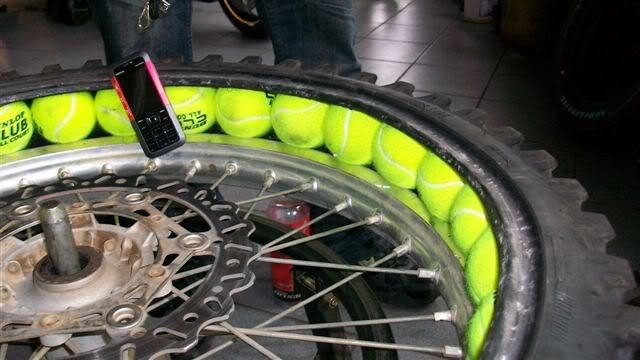 Two of the most common skid steer tires have the following dimensions;
Two of the most common skid steer tires have the following dimensions;
Based on these dimensions, the weight of one foam-filled 10×16.5 tire will be 130 pounds. So for four tires, the total weight added to the skid steer is 520 pounds, just for the tires. The same for a 12×16.5 tire will be 205 lbs, and for four tires, the total volume of foam required will be 820 lbs. This is what gives extra stability to the vehicle and makes it a better choice for rough terrains.
The short answer would be no. For one, the skid steer tires are nothing like car tires. These are the big boys we are talking about, and handling them is easier said than. We understand that taking the skid steer to the mechanic is also a task, but going to the mechanic is the safer route.
Foam is not bad for tires per se. Yes, it makes the tires heavier, and it won’t bulge or bend under pressure.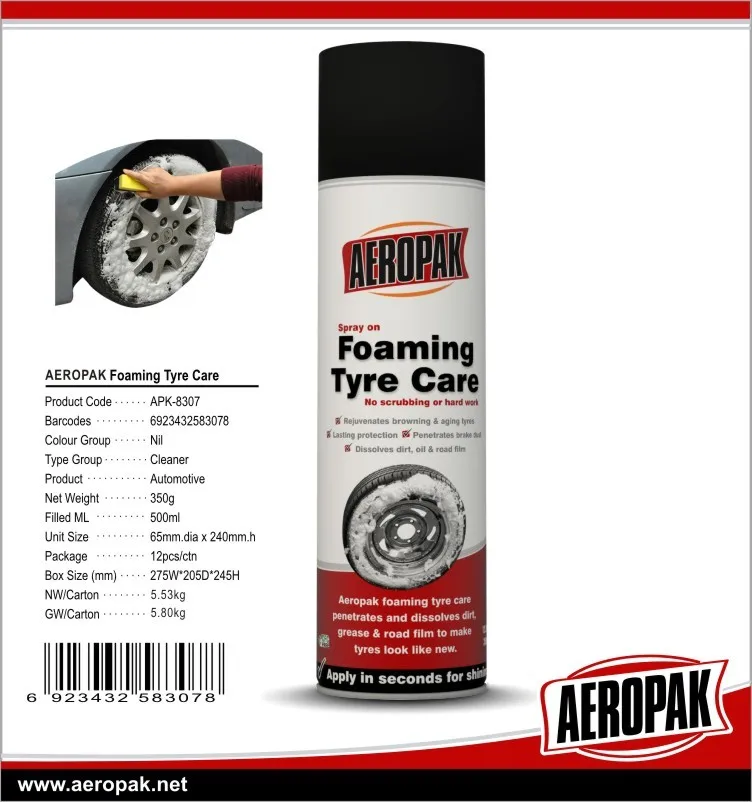 In some situations, this can cause some trouble with driving due to gripping issues.
In some situations, this can cause some trouble with driving due to gripping issues.
The only downside to filling foam in the tires is that they are practically junk after they wear out. You cannot use them in other places, at least not easily. Plus, the tires will be heavier than other bald tires, which may be used in other places.
But performance-wise, foam is not bad for tires. If anything, it improves the tire’s life span as there won’t be any puncture issues.
Yes, the process is safe. As long as you are following the proper process, things will go smoothly. However, the problem may arise after replacing the tire on the vehicle because we have heard cases when tires went flat right after bringing the vehicle down.
It depends on the tire and the cost of the container, and its capacity. As discussed above, one 10×16.5 tire requires 130 lbs, and one 12×16.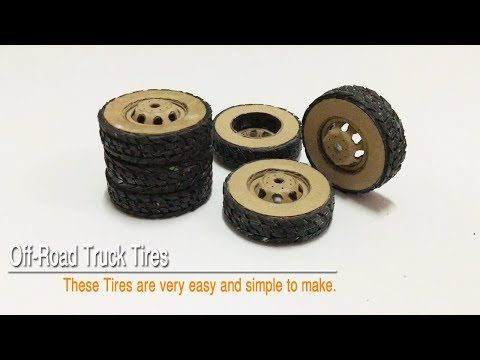 5 tire requires 205 lbs of foam. Depending on the volume required (approximately 24.5 gallons for one 12×16.5 tire), you can calculate the cost.
5 tire requires 205 lbs of foam. Depending on the volume required (approximately 24.5 gallons for one 12×16.5 tire), you can calculate the cost.
Yes, the US FMCSA regulations Section 393.75 mandates that the tire can be filled with materials other than air including silicone and polyurethane.
Thanks for signing up!
Access your favorite topics in a personalized feed while you're on the go.
Following is a transcript of the video.
Narrator: This is a tire technician disassembling what's known as a foam-filled tire. It's a grueling process, but an important one for these special kinds of tires once their tread has worn off. The extra work is apparently worth it, because foam-filled tires come with special benefits and capabilities that companies are willing to pay thousands of dollars more for than air-filled tires. So, how exactly are foam-filled tires made?
Tire Doctor: So, foam-filled tires are basically the exact same thing as air tires. They just have a heavy-duty compound called urethane in them that gets injected through a hose. You let it sit over three to four days, and that's called the curing process.
Narrator: Once the liquid urethane has hardened and manufacturers are sure that the tire is absent of any air, they're ready to go.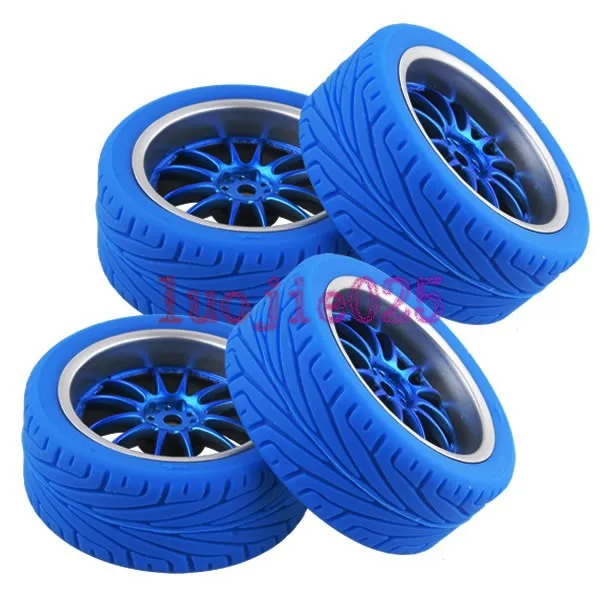 So, what's the point of having your tires filled with dense foam instead of air? If you're a construction company working on a site covered in loose nails and debris, foam-filled tires that can't go flat are exactly what you need.
So, what's the point of having your tires filled with dense foam instead of air? If you're a construction company working on a site covered in loose nails and debris, foam-filled tires that can't go flat are exactly what you need.
Tire Doctor: So, companies will usually do foam-filled tires if they don't want any downtime, because downtime is very expensive for certain customers. Basically what downtime means is if you get a flat because you have an air tire, then you're unable to move that unit until a tire guy like me comes along and fixes it.
Narrator: Besides being impervious to punctures, foam-filled tires provide construction trucks with a softer ride because of the consistent PSI in each tire, and they add extra weight for the more difficult tasks.
Tire Doctor: So, foam-filled tires can also act as a ballast. So, basically, if you are lifting really heavy things, like really heavy rocks, it can stop you from tilting forward.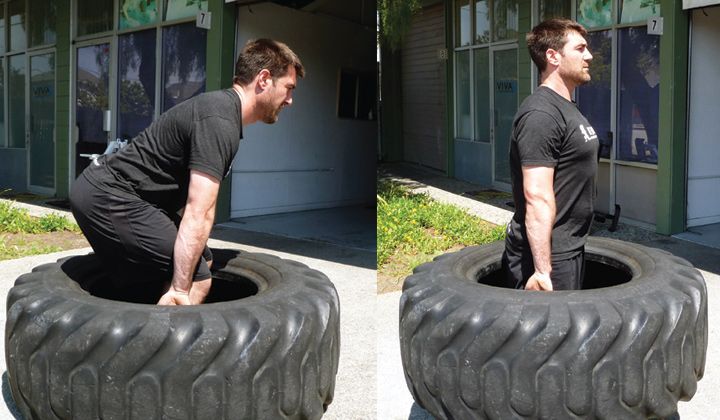 Or if you're rolling one of those big rollers, you put on foam-filled tires, and it adds maybe 1,000 to 2,000 pounds, even more depending on the tire size.
Or if you're rolling one of those big rollers, you put on foam-filled tires, and it adds maybe 1,000 to 2,000 pounds, even more depending on the tire size.
Narrator: But don't get confused. These tires are not made for your full-size pickup or off-road SUV. The speed of passenger vehicles would make the foam melt, and the weight of the tires alone could send you veering off the road and destroy your suspension.
Tire Doctor: So, there's a lot of controversy between if something on the highway can actually have foam-filled tires. A lot of people ask me that kind of thing, like, "Can I put foam-filled tires on my car?" And it's definitely a no. Typically, foam-filled tires are used for low-speed vehicles like construction units, like a skid steer or a loader.
Narrator: Still, it's hard not to envy the idea of tires that can't go flat. That's why the construction companies that use them have to pay so much, between the amount of labor and liquid urethane filling they involve.
Tire Doctor: So, you're usually going to have to pay two to three times more per tire. And you also have to purchase a new tire as soon as you want foam, because if you start to put a used tire on, it doesn't really make the cost worth it. So, say, a smaller tire, it would usually be worth up to $1,000 per tire. And then for the higher-end tires, like the big mining trucks or anything like that that you see in the quarries, it's going to be upwards of, I would say, $5,000 to $10,000 per tire.
Narrator: These extra-expensive construction tires last the same amount of time as regular air-filled ones, if not longer, before their tread wears off. Even so, the time eventually comes when foam-filled tires need to be disassembled. Videos of tire technicians tearing them apart at the end of their life span have become popular online, but this fun-to-watch process isn't the typical way it's done.
Tire Doctor: So, we can bring it in to, say, the people that foam-fill our tires, and they can take it off with a machine, which is way easier, saves a ton of time. But what we do for our customers is we actually do it manually. And it's really labor-intensive, that's for sure. I'm a little too skinny to do that job. My brother has got to do that one. But the reason why we do this is because it saves our customers a couple hundred dollars here and there. Maybe for four tires, it would cost $500 or $600. And instead, we will charge our customers $250. 'Cause it is a family business, so it helps us out a little bit, and it also helps our customers out, so that's why it's good to hire family businesses.
But what we do for our customers is we actually do it manually. And it's really labor-intensive, that's for sure. I'm a little too skinny to do that job. My brother has got to do that one. But the reason why we do this is because it saves our customers a couple hundred dollars here and there. Maybe for four tires, it would cost $500 or $600. And instead, we will charge our customers $250. 'Cause it is a family business, so it helps us out a little bit, and it also helps our customers out, so that's why it's good to hire family businesses.
Read next
Over time, any villager and summer resident gets a lot of various wheeled vehicles that require constant attention and care, including the repair of pneumatic tires and their regular inflation. And it often happens that at the most necessary moment the wheels of turn out to be flat. And as technology ages, this happens more and more often. For example, these troubles began to haunt me constantly, and especially often in winter, in the most severe frost. And that's even worse.
And it often happens that at the most necessary moment the wheels of turn out to be flat. And as technology ages, this happens more and more often. For example, these troubles began to haunt me constantly, and especially often in winter, in the most severe frost. And that's even worse.
To fill the wheel tire with foam, you first need to drill several holes in the rim with a diameter of 10 mm ...
Finally, I got tired of it, and I solved the problem radically - I “pumped up” the tire not with air, but with polyurethane foam. I first tried filling the tire with foam through the nipple hole. It turned out, but not entirely successful - in some places, due to traffic jams, air sacs remained unfilled with foam. In addition, a significant part of the foam from the hole of the nipple squeezed back.
But the trouble is the beginning! After trying several different options, I eventually found a way to fill the tire with foam without plugs or air pockets. To do this, I drilled several holes 010 mm around the circumference of the wheel disk in such a way that the tube from the foam can freely enter into them. Before starting to fill the tire with foam, it is necessary to prepare several wooden plugs-pegs (according to the number of drilled holes in the disk), which should fit tightly into these holes and prevent the foam from breaking free.
To do this, I drilled several holes 010 mm around the circumference of the wheel disk in such a way that the tube from the foam can freely enter into them. Before starting to fill the tire with foam, it is necessary to prepare several wooden plugs-pegs (according to the number of drilled holes in the disk), which should fit tightly into these holes and prevent the foam from breaking free.
Insert the canister tube into any of the holes drilled in the disk and start the foam supply.
As soon as the first traces of foam that have reached it appear in the adjacent hole, we stop the supply from the can and immediately plug the first hole of the plugs tightly with a peg. After that, you can start feeding foam into the next hole. Then to the next...
In the same way, you can fill the tires of any other wheeled equipment, such as a garden cart, with foam.
Fill the tire with foam as follows. We insert the tube of the can into any of the holes drilled in the disk and start the flow of foam. As soon as the first traces of the foam that has reached it appear in the adjacent hole, we stop the supply from the can and immediately plug the first hole tightly with a peg. After that, you can start feeding foam into the next hole. Then to the next. The last hole, as a rule, no longer needs to be foamed, and as soon as foam appears from it, you just need to plug it with a peg plug. With this sequence of filling, air sacs usually do not remain.
As soon as the first traces of the foam that has reached it appear in the adjacent hole, we stop the supply from the can and immediately plug the first hole tightly with a peg. After that, you can start feeding foam into the next hole. Then to the next. The last hole, as a rule, no longer needs to be foamed, and as soon as foam appears from it, you just need to plug it with a peg plug. With this sequence of filling, air sacs usually do not remain.
The process of self-vulcanization of the foam inside the tire - in a closed volume without air access - takes a little longer than under normal conditions. The operation of foam-filled wheels can be started no earlier than in a day. And with a large volume of tires, it is better to wait at least two days.
I have been using this technology for filling tires with foam for more than 10 years, and the first foamed tire is still working properly today, although I use it without any discounts both in winter and in summer. For several years, one of the wheels of my old truck was filled with foam. It no longer made sense to repair this wheel in the traditional way, and after filling it with foam, I drove it for quite some time, however, at low speed and for short distances, mainly in the village. The motorcycle that I use for trips to the forest for mushrooms has been running on foam tires for many years.
It no longer made sense to repair this wheel in the traditional way, and after filling it with foam, I drove it for quite some time, however, at low speed and for short distances, mainly in the village. The motorcycle that I use for trips to the forest for mushrooms has been running on foam tires for many years.
Initially, I had doubts about the durability of tires filled with foam, but over the years I have become convinced that without air access, the foam does not break down at all and serves reliably, especially where high speeds are not needed. It is also noteworthy that lugs can be easily fixed on foamed wheels, and using the most common screws with nuts or screws for this. This is especially true when operating equipment in winter for driving on snow-covered roads or off-road.
Author; Vladimir Mikhailovich Legostaev0009
Rate this article:
(26 votes, average: 4.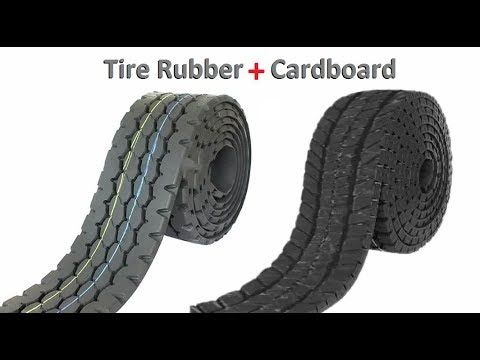 4 out of 5)
4 out of 5)
Share with your friends!
Description of all the subtleties of the process of "sealing" the door with foam.
Cold air and dust get into the technological gap, which remains after the installation of the entrance doors to the apartment. The final touch after the installation of metal structures is the foaming of cracks.
The ideal option is to buy a special gun, insert a can of foam into it and seal the cracks. However, it is quite possible to do without this device. Each cylinder is equipped with a hollow tube. True, the consumption of foam in this case will turn out much more.
If the door is installed by the masters of the manufacturing company, foaming the cracks is included in the mandatory list of work, so there is no need to do anything yourself. Another thing is when the specialist forgot about it. In this case, you will have to perform the foaming yourself:
In this case, you will have to perform the foaming yourself:
To prevent the box from opening inside, you do not need to stuff the foam to the eyeballs - it should not fall out. You just need to block the air from the street from entering the house, so do not stick the gun deep into the hole.
Foaming gaps after door installation
Close the box with masking tape
Wetting surfaces with water
Let's start foaming from the bottom up
Walk again if necessary
If the casing is convex and hollow on the inside, the foam can be left uncut.